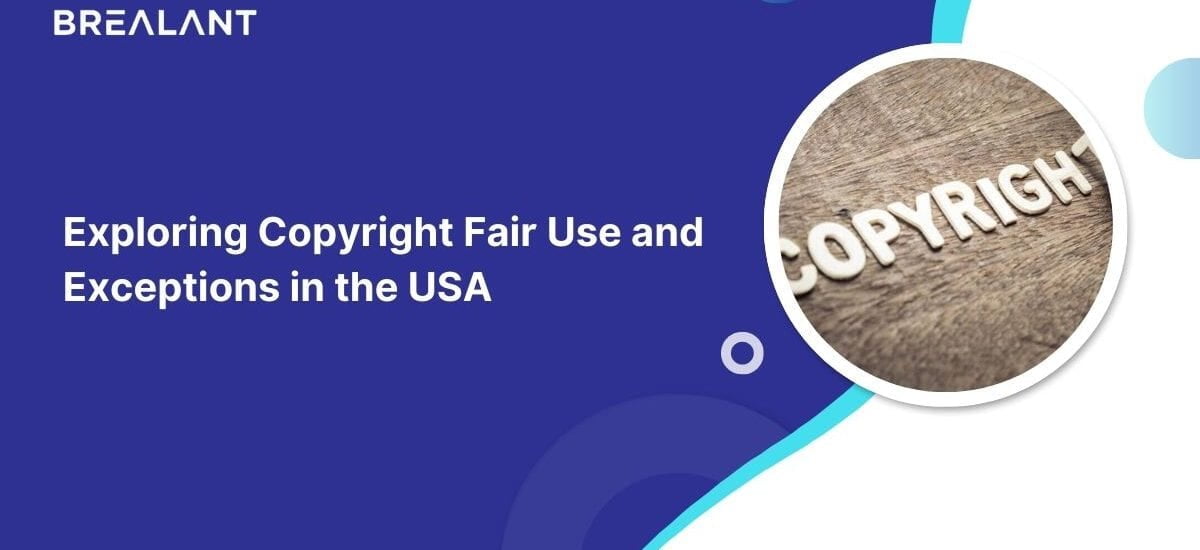
Copyright protects one’s creative works, such as art, music, poems, etc., and prevents others from using it without the creator’s permission. Using or copying someone’s copyrighted work leads to infringement, and the infringing party should pay and compensate for the losses to the copyright owner. However, there are some cases in which using a copyrighted work without the creator’s permission is acceptable. It is called the copyright fair use and exceptions, and it is acceptable only when the use is limited to certain conditions. Let us dive deep into copyright fair use and exceptions in the USA.
Exceptions To Copyright Infringement
Anyone who wants to use, modify, or sell the copyright of others should obtain a proper license before doing that. If not, it will result in copyright infringement, and the infringer has to pay for the losses that occurred because of the infringement to the copyright owner. In certain cases, using one’s copyrighted work is acceptable. They are,
- Using copyrighted material for face-to-face training.
- Using copyright for distance education (TEACH Act)
- Using copyright under the rule of fair use.
The first two exceptions state that copyrighted work can be displayed for a teaching purpose in a face-to-face or online classroom. Also, the TEACH Act requires a copyrighted statement to be mentioned in the learning materials provided to the students. The following passages will teach us about the third exception (Fair Use).
Fair Use of Copyright- Explained
Fair use of copyright means using a copyrighted work without a license or permission from the copyright owner. Using copyright for several activities such as teaching, research, criticism, and reporting will be included under fair use and doesn’t require a license from the copyright owner. However, copyright usage will be permitted under fair use if it follows certain factors. Let us discuss each fair use factor in detail.
Fair Use of Copyright- Factors to be Considered
Before using anyone’s copyright without permission, ensure that your fair use is limited to the following factors:
- Purpose of the copyright usage
- The copyright’s nature
- The amount of copyrighted work used
- The effect of the copyright’s usage on the market.
- Purpose of the copyright usage.
If you are using a copyrighted work for an entirely different purpose than the nature of the copyright, it can support fair use. This is called transformative use. For nonprofitable educational and teaching purposes, using a copyright in the course materials or digitizing it for online education (with no access to print) can be accepted as fair use.
- The copyright’s nature: Fair use of copyright depends on the nature and creativity of the copyrighted material. It will not be considered fair use if you are about to use more creative or fictional copyright such as music, art, etc. If it is more non-fictional or factual, it will support fair use. Also, it is always better to use a published work than an unpublished one, as it supports fair use more than an unpublished one.
- The amount of copyrighted work used: Fair use also depends upon the amount of copyrighted material we use. If we use a relatively smaller portion of the work, it will favor fair use. For example, instead of copying the whole work, just taking some lines or paragraphs or pages will not affect the originality of the work and is considered fair use. However, if the small portion has the most weightage and may reject the need to buy that copyrighted material, it will weaken the fair use and may favor the copyright owner. Also, if you are using the work as transformative use for teaching purposes in the appropriate amount, it will support fair use.
- The effect of the copyright’s usage on the market: We knew that if the use is in the appropriate amount, transformative or for teaching purposes, it is acceptable under fair use. However, if the use affects or impacts the potential market, it may not be considered a fair use of the copyright by the court.
To Sum Up
From the above discussion, you now understand the USA’s copyright fair use and exceptions. Copyright protects one’s right or ownership of his creative works and properties. However, the doctrine of fair use allows us to use copyrighted materials to some extent by following certain limitations. If any copyright doesn’t comply with the doctrine of fair use, then a license is required asking permission from the copyright owner.
Suppose you want to protect your intellectual properties by registering a patent, copyright, or trademark with the USPTO (United States Patent and Trademark Office). In that case, Brealant is here to assist you throughout the process. We aim to solve all your IP-related queries and guide you successfully in copyright registrations!

